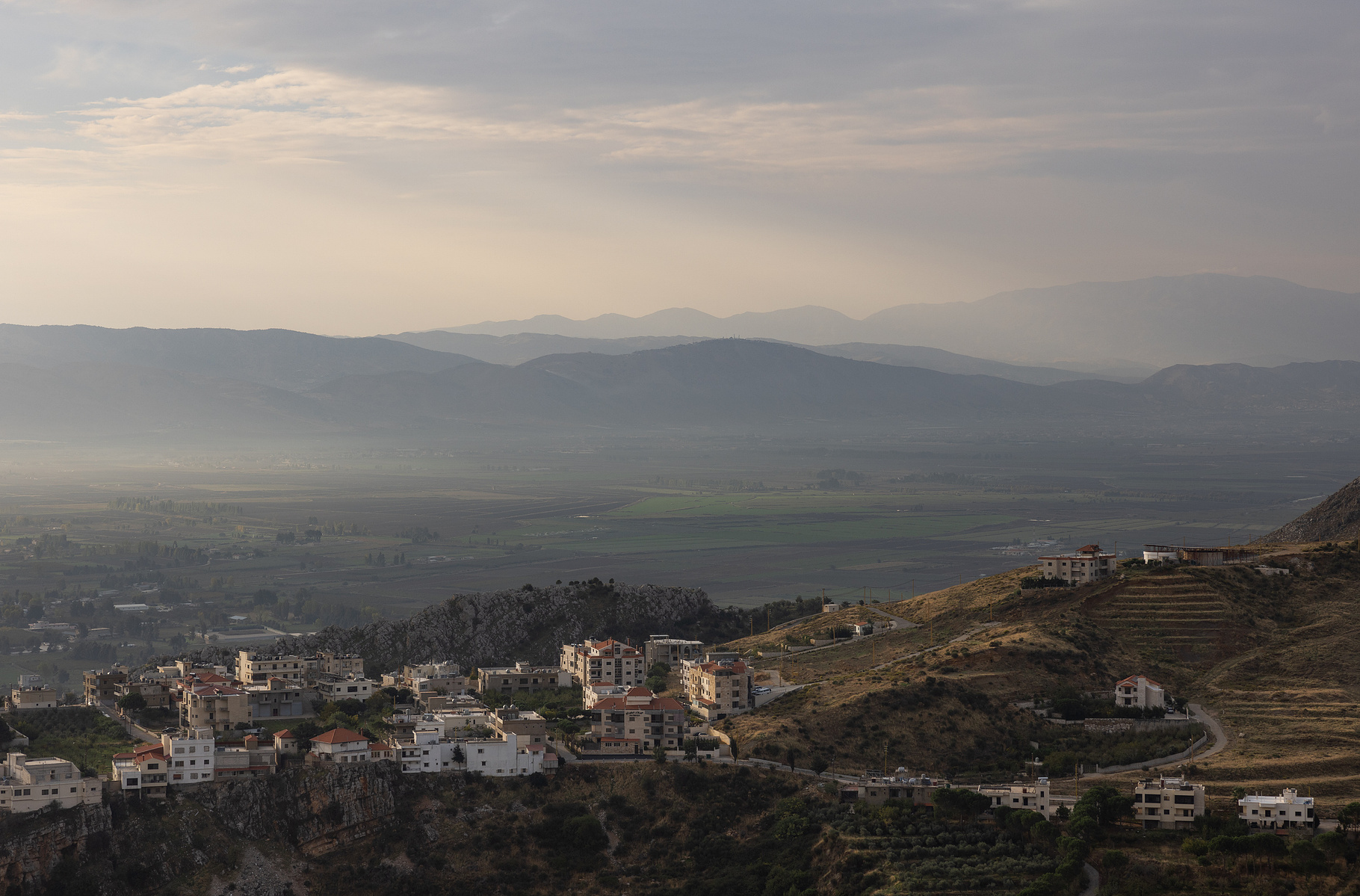
Lebanon's Beqaa Valley, a fertile plain near the Syrian border, which makes up 40 percent of the country's arable land.
OUR SEEDS, OUR ROOTS
Seed-Saving in Lebanon.
In Lebanon, seed-saving is a traditional practice that is re-emerging amidst the country's economic crisis and the ongoing impacts of climate change in the Mediterranean. As the Lebanese pound devalues, the cost of purchasing imported agricultural inputs and GMOs seeds has skyrocketed. Climate-change induced drought has made water scarce in the Beqaa region, Lebanon's breadbasket, and as a consequence of these confluent factors, many farmers are returning to growing local, heirloom vegetables and grains.
Heirloom vegetables and grains, like banadoura jabaliyye, loubia hammaniyya, and Salamouni wheat have intrinsic adaptation to the land, have rich cultural legacies, and often require less maintenance and water. Thus they can be cheaper to grow, despite lower yields.
However, for a farmer that has grown GMO wheat or Monsanto soybeans for decades and wants to change, where will they get new seeds?
This is where research group ICARDA (International Center for Agriculture Research in the Dry Areas) and the community collective Buzuruna Juzuruna come in. Both of these associations practice seed-saving, albeit in different, often contradictory ways. Recognizing the food crisis tied to Lebanon's economic collapse and rapid climate variations, they both seek to collect, save, protect and distribute heirloom seeds. Buzuruna Juzuruna's seed bank is a living, farmer-run and collective endeavour. Heirloom varieties of wheat and vegetables are planted on their farm and the seeds saved and distributed to fellow farmers after every harvest, with their "bank" being the proliferation of plots of heirloom produce throughout the country, in addition to a small storage room of dried seeds on their farm.
In contrast, ICARDA is primarily a research facility, and their seed bank consists of large storage rooms of cold storage. Their goal is accumulation of drought-tolerant and heirloom varieties of wheat from the SWANA region, and their collection is designed to last decades. Samples of their seeds are sent to the Svalbard Global Seed Vault each year, designed as a repository of seeds in the event of global disaster.
This cold storage approach means that once collected, the seeds ICARDA saves are kept as is. They are frozen in time. Yes, if an heirloom species is on the brink of extinction, it can be "brought back" by germinating the seeds from cold storage, and this preserves beloved heirloom produce, but the genetic properties of each seed is linked to the moment in time they were collected.
Buzuruna Juzuruna's living seed saving practice, in contrast, means that with every generation of seeds that is sowed and harvested, the seeds continue to accumulate genetic diversity and adapt further to the land. This can make these heirloom species more resilient and hardy, and thus better able to withstand the test of time - as long as they are continually grown.
These images follow ICARDA and Buzuruna Juzuruna’s parallel yet contrasting seed-saving practices in the Beqaa, showing disparate ways of preserving heirloom vegetables and grains. Despite their differences, both initiatives contribute to a Lebanese ecosystem where farmers, in the face of adversity, maintain access to the seeds of their ancestors.
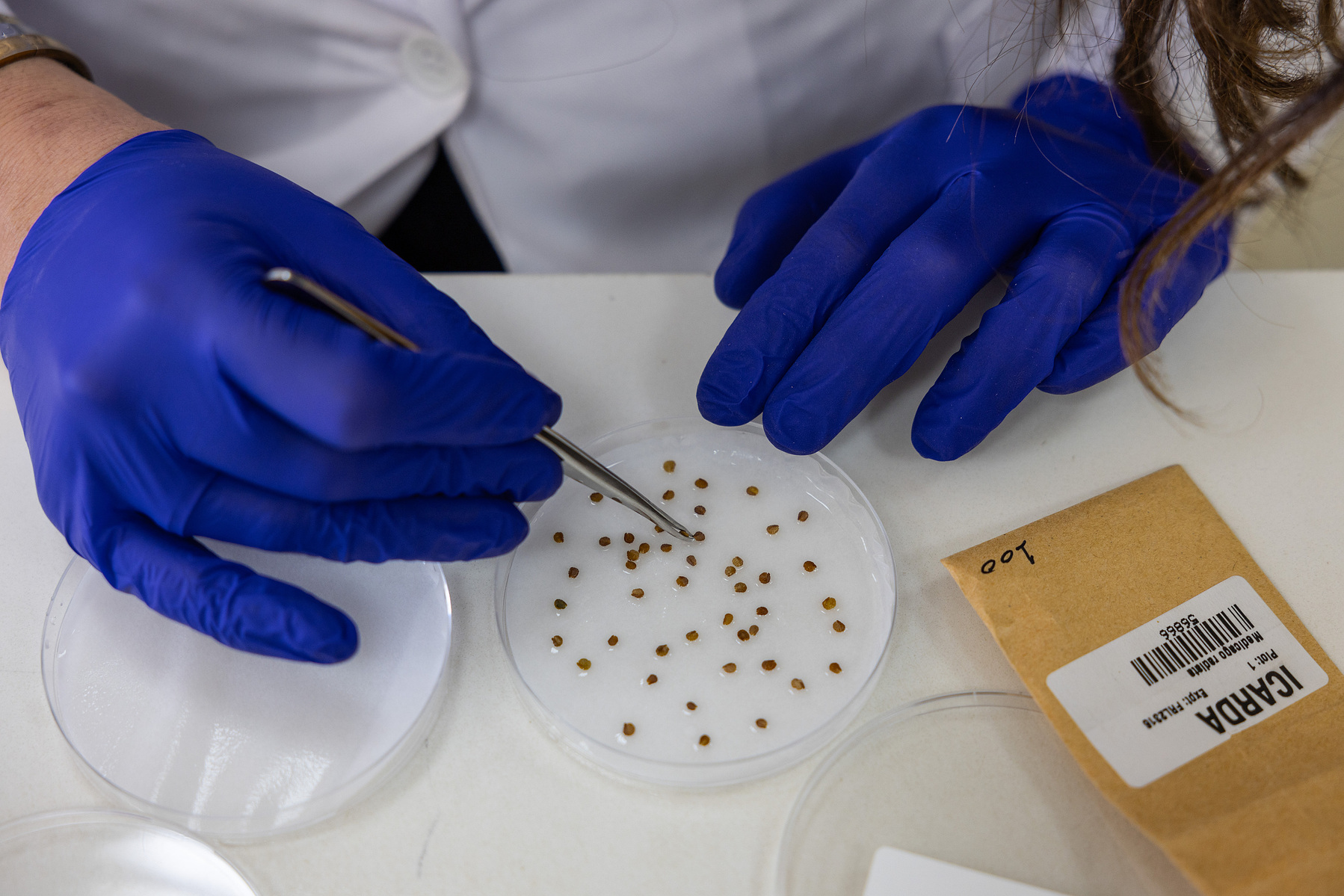
Aline Abou Zeidan, a researcher at ICARDA's seed bank in Terbol, Lebanon, sets out seeds in a germination disk for viability testing.
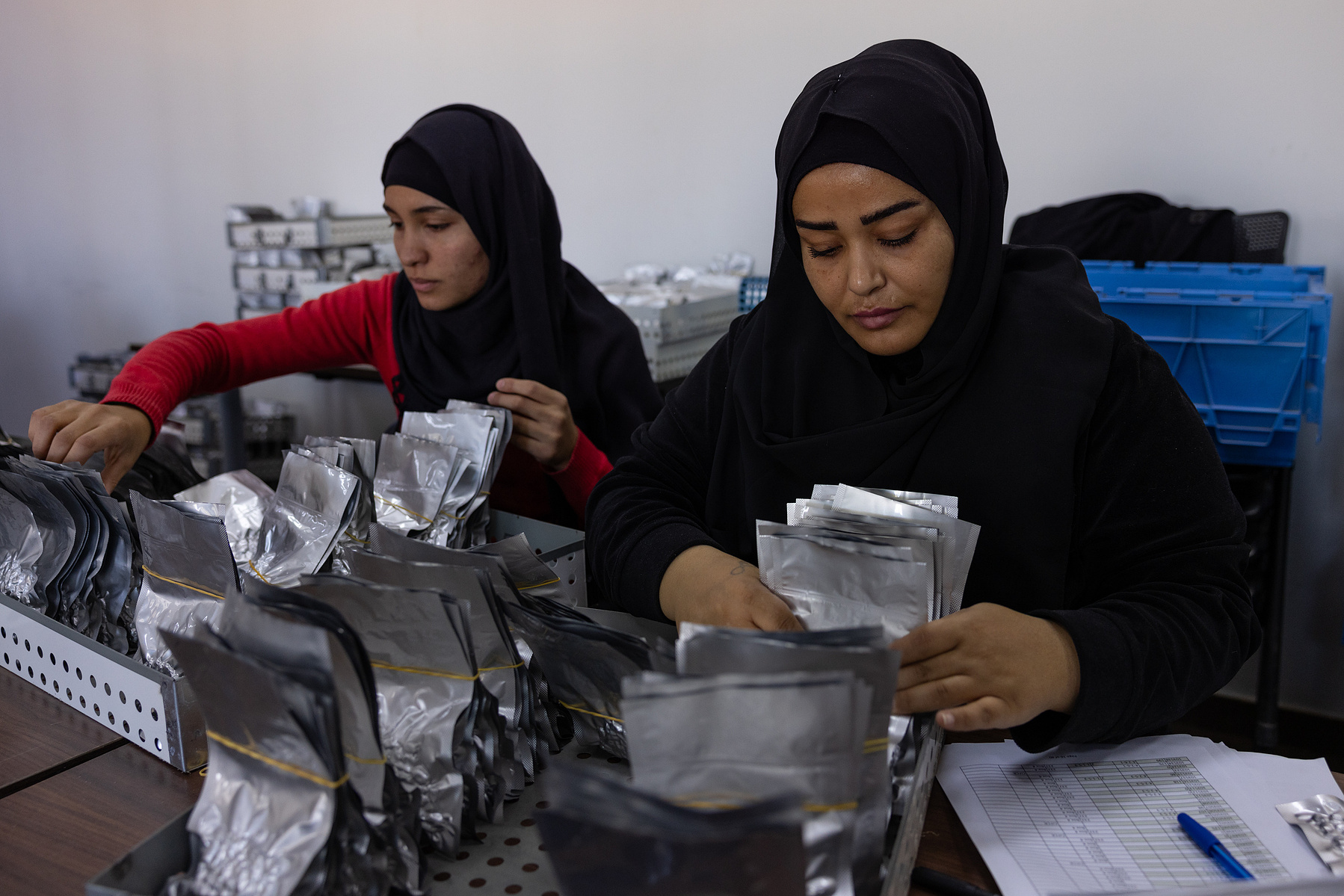
Fatima Hamid (right) and Amina Itani (left) sort seeds to send to a sister gene bank in Morocco.
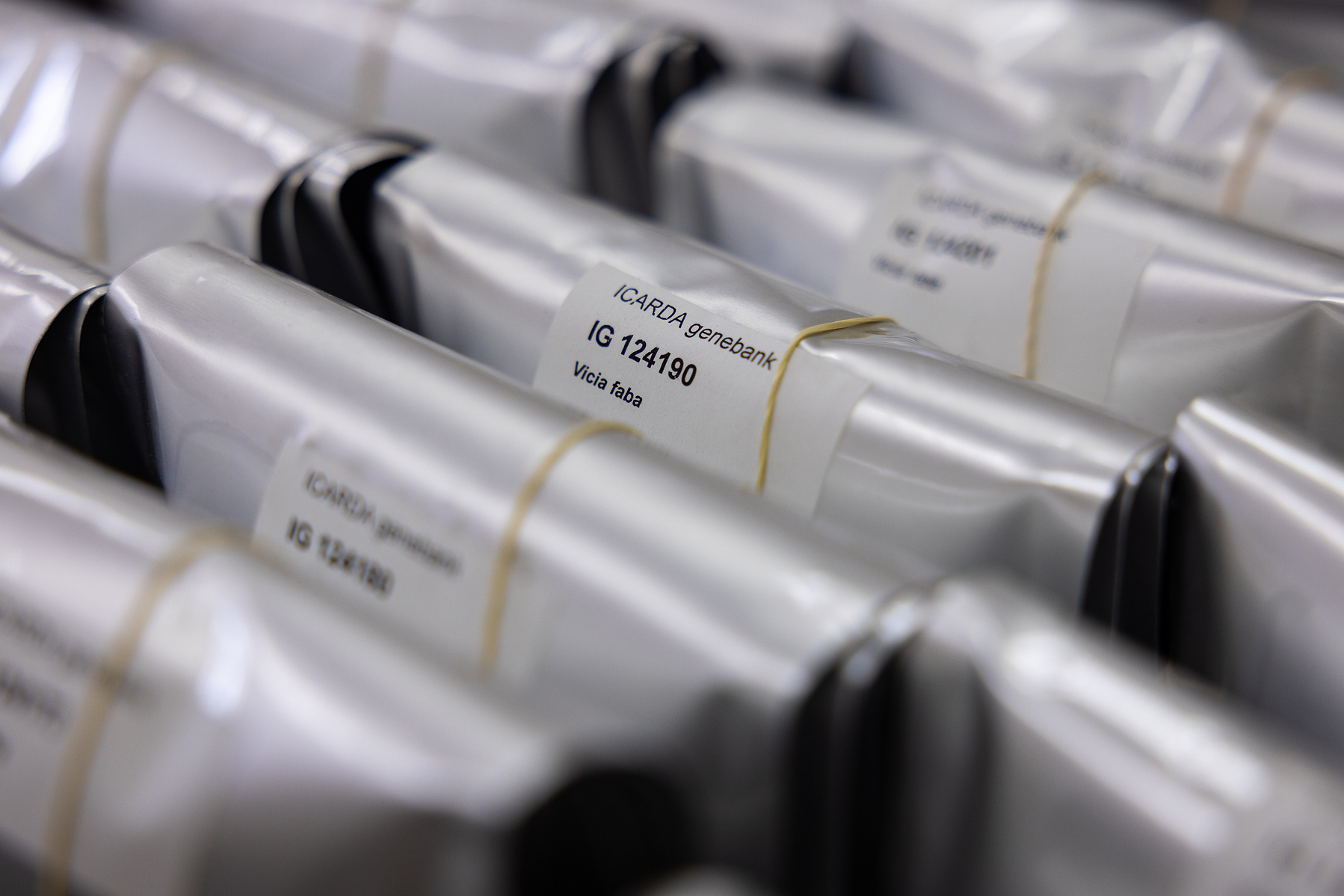
Seed packets labeled and prepared for medium-term storage at ICARDA.

Basma Swad (top) and Zahra Hussein (bottom) sort seeds in long-term storage at ICARDA, a room that is essentially a deep freezer.
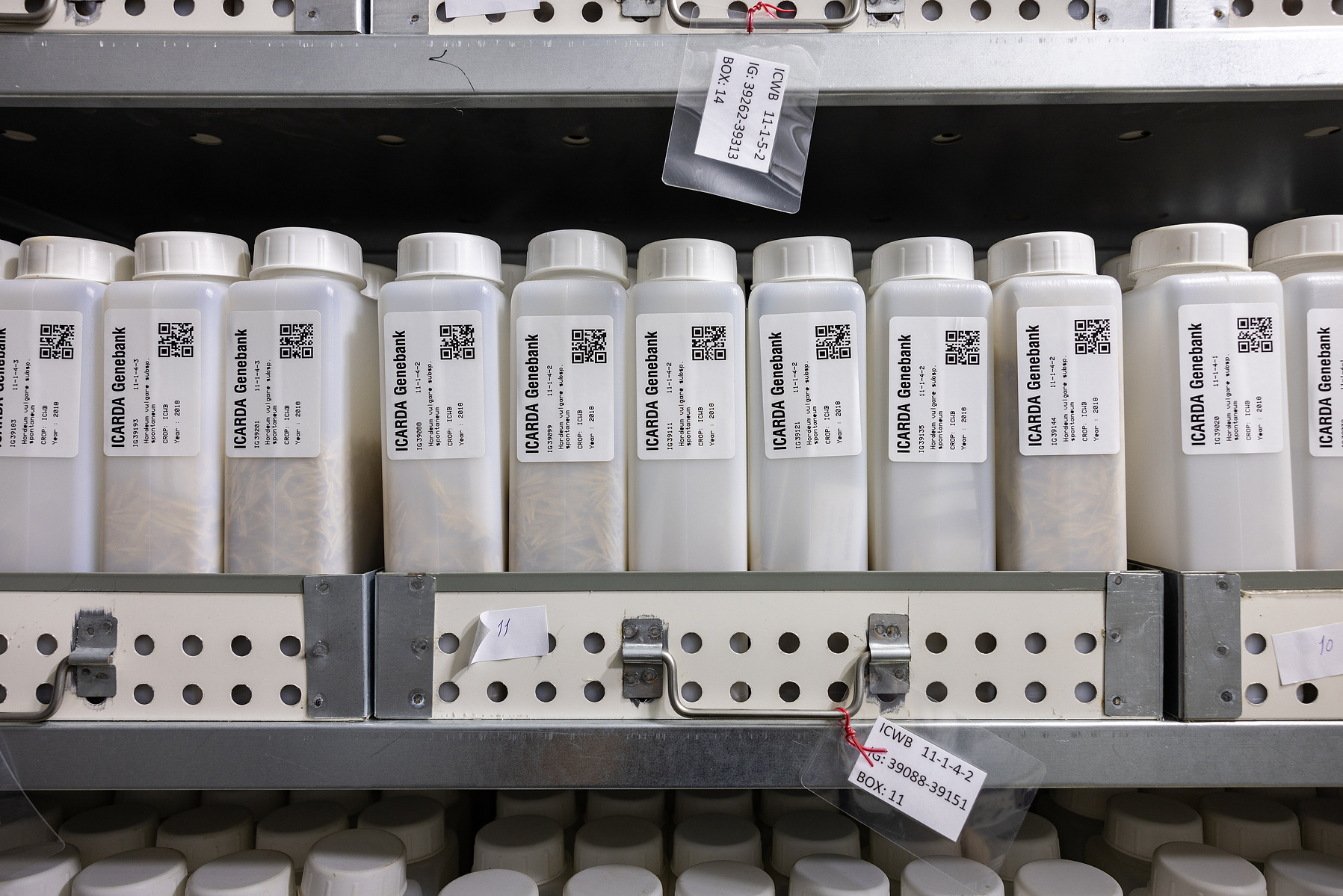
Seed bottles in long-term storage at the ICARDA facility in Lebanon's Beqaa valley.
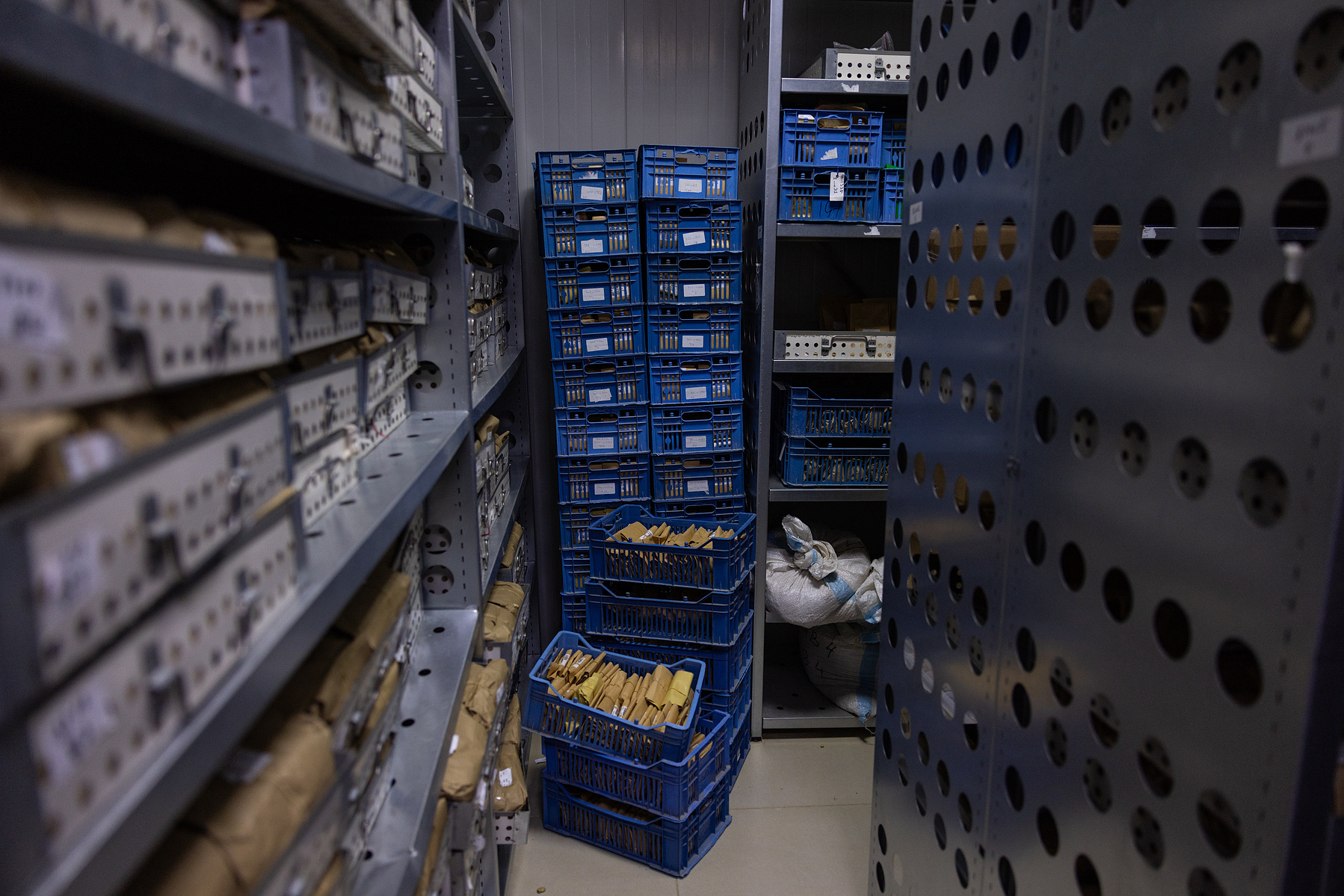
Short term dry storage room at ICARDA in Lebanon.

The control panel for the different seed storage rooms at ICARDA. The coldest room is for long-term storage, while other rooms are for medium term storage or hold new seeds undergoing drying.

Labeling and sorting saved seeds at the Buzuruna Juzuruna farm in Saadnayel, Lebanon.
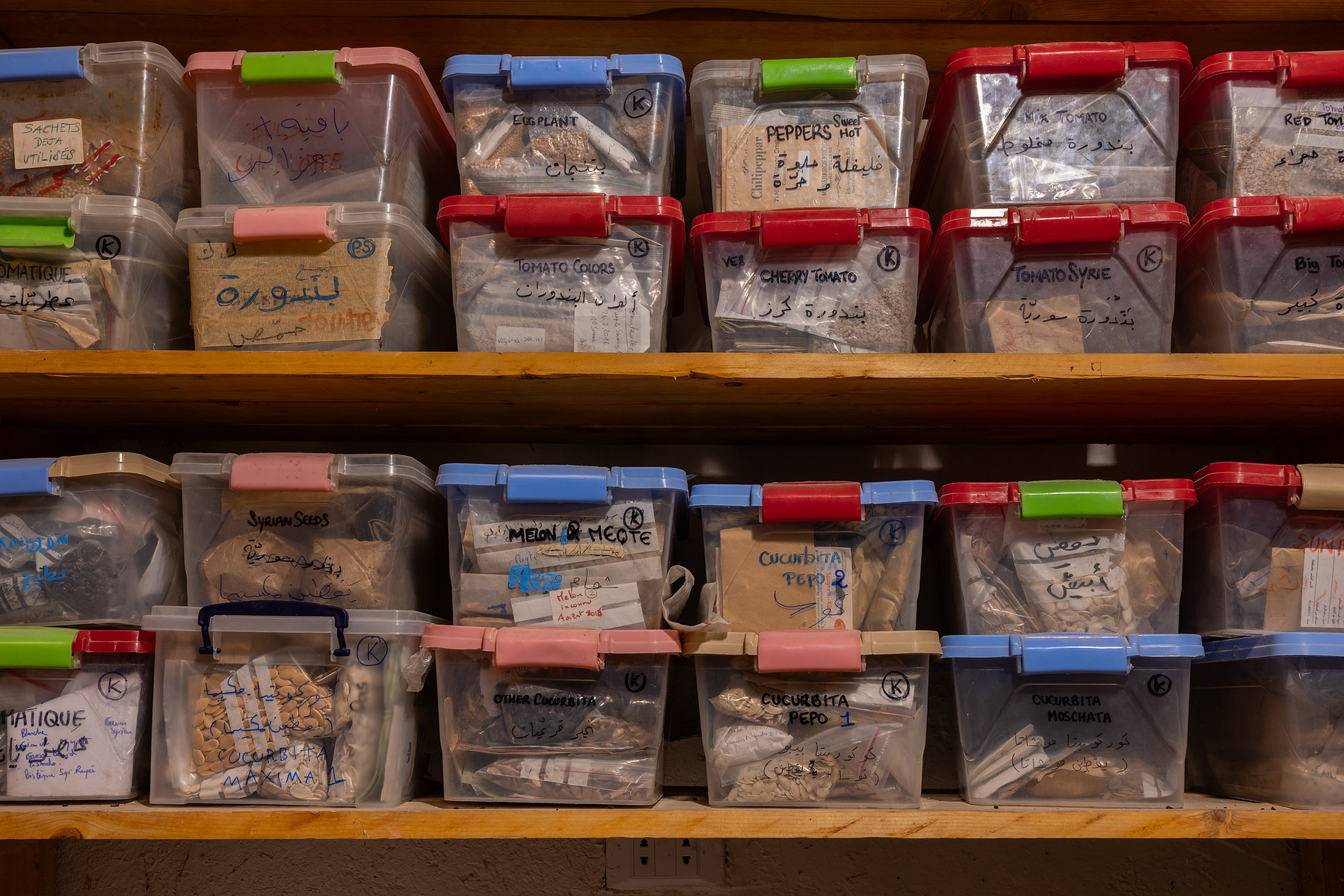
Buzuruna Juzuruna's seed library.
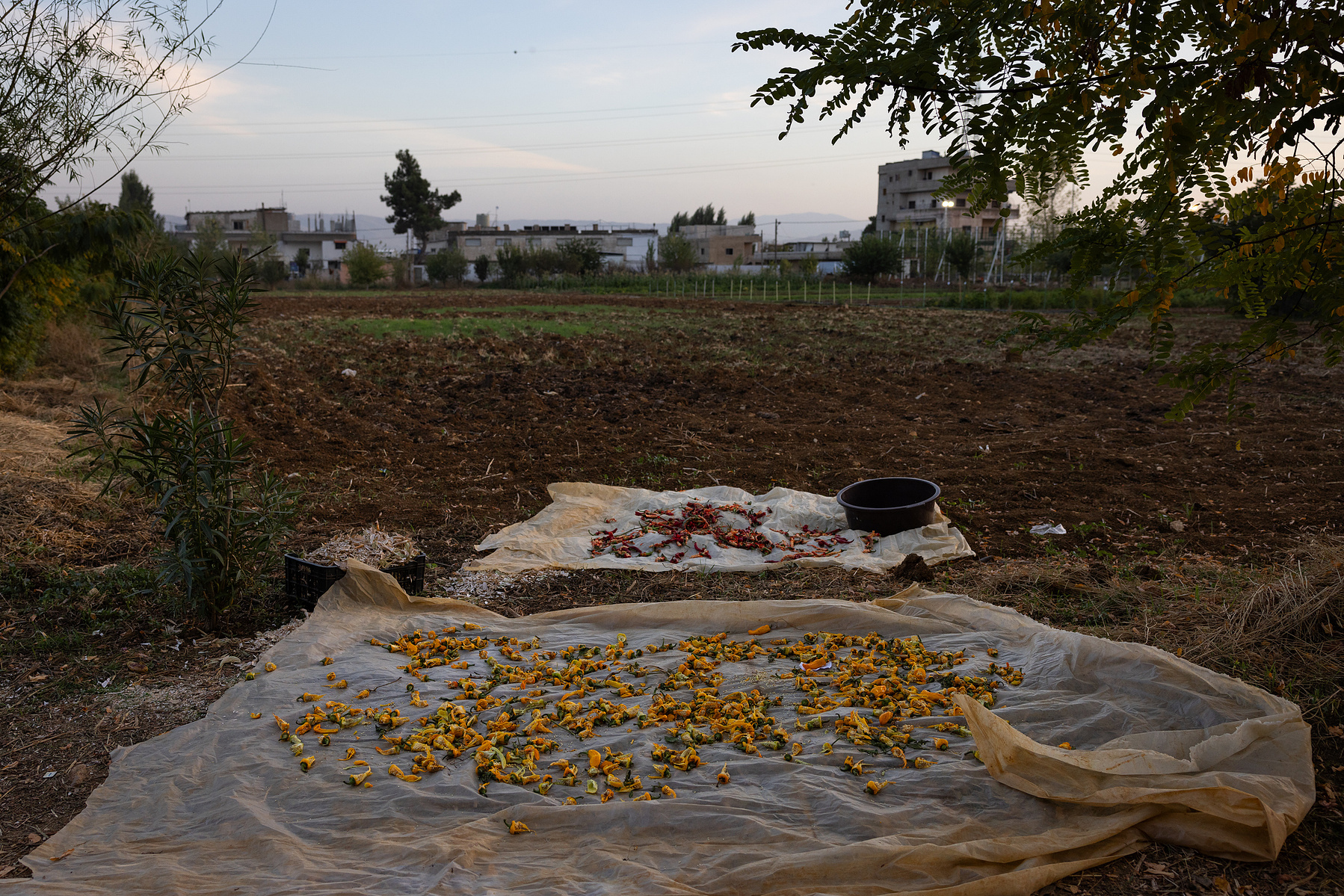
Whole peppers laid out to dry, in preparation for collecting the seeds of each varietal, in Saadnayel, Lebanon.
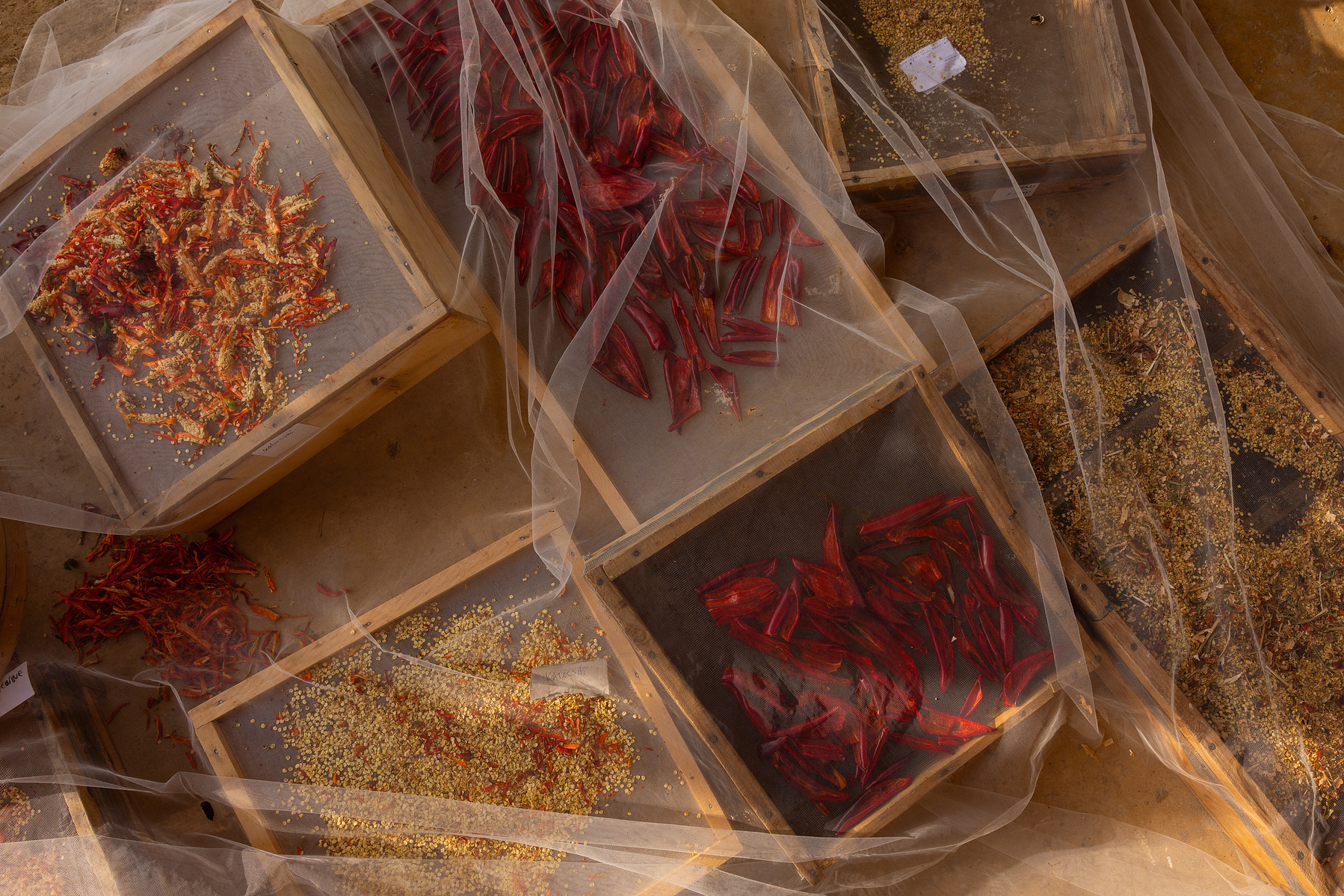
At Buzuruna Juzuruna sifting screens like these are used to manually separate seeds from dried produce.

Making hobz - bread - using heirloom wheat. There are distinct taste, texture and color differences between flour milled from heirloom wheat varieties and standard supermarket "all-purpose" wheat.
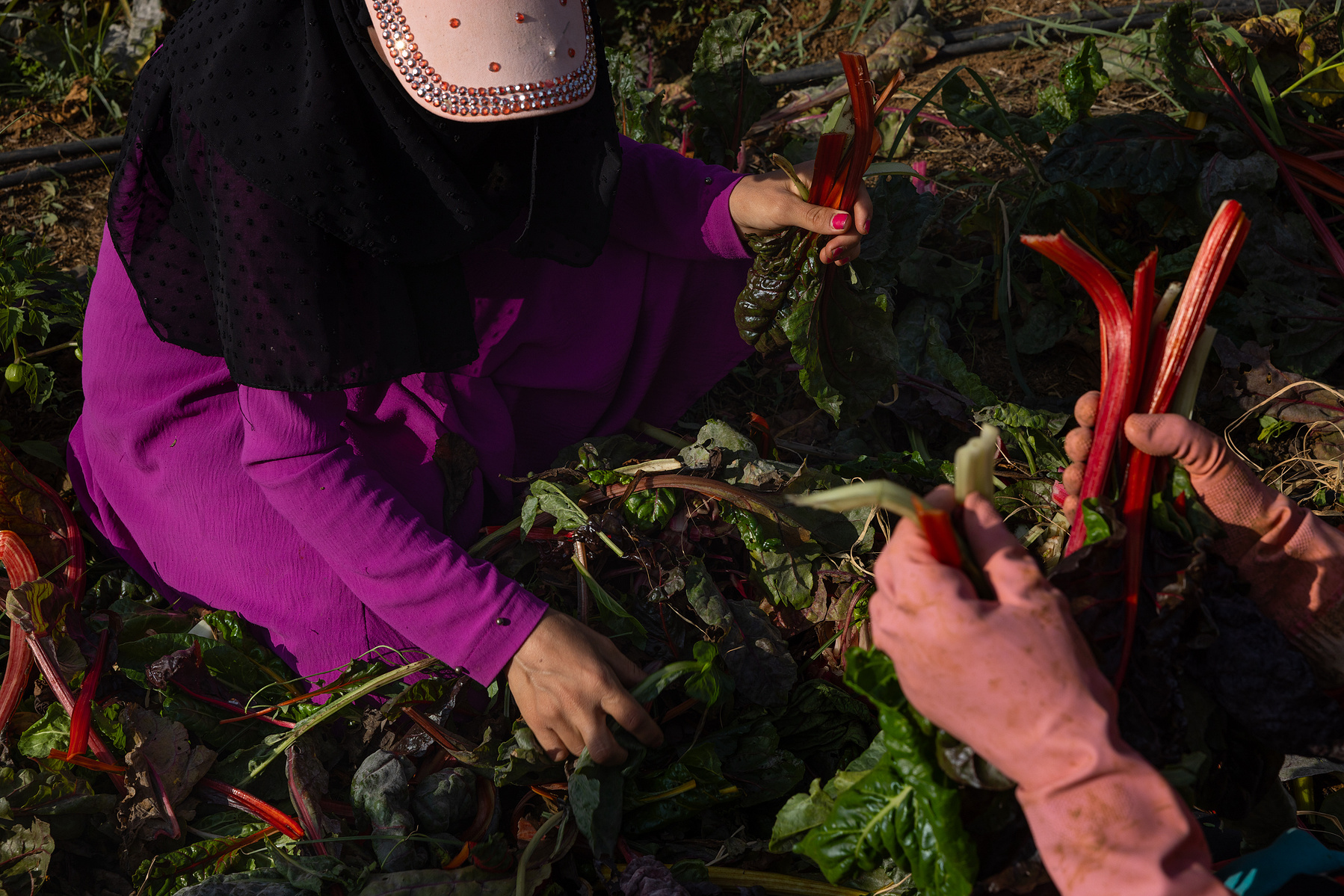
An heirloom variety of chard is harvested on the Buzuruna Juzuruna farm in the Beqaa valley.

Aromatics being harvested at Buzuruna Juzuruna. During every harvest, a portion of the aromatics grown on the farm are eaten or sold, while another portion is left to flower and turn to seed in the fields, providing seeds for distribution and the next harvest.
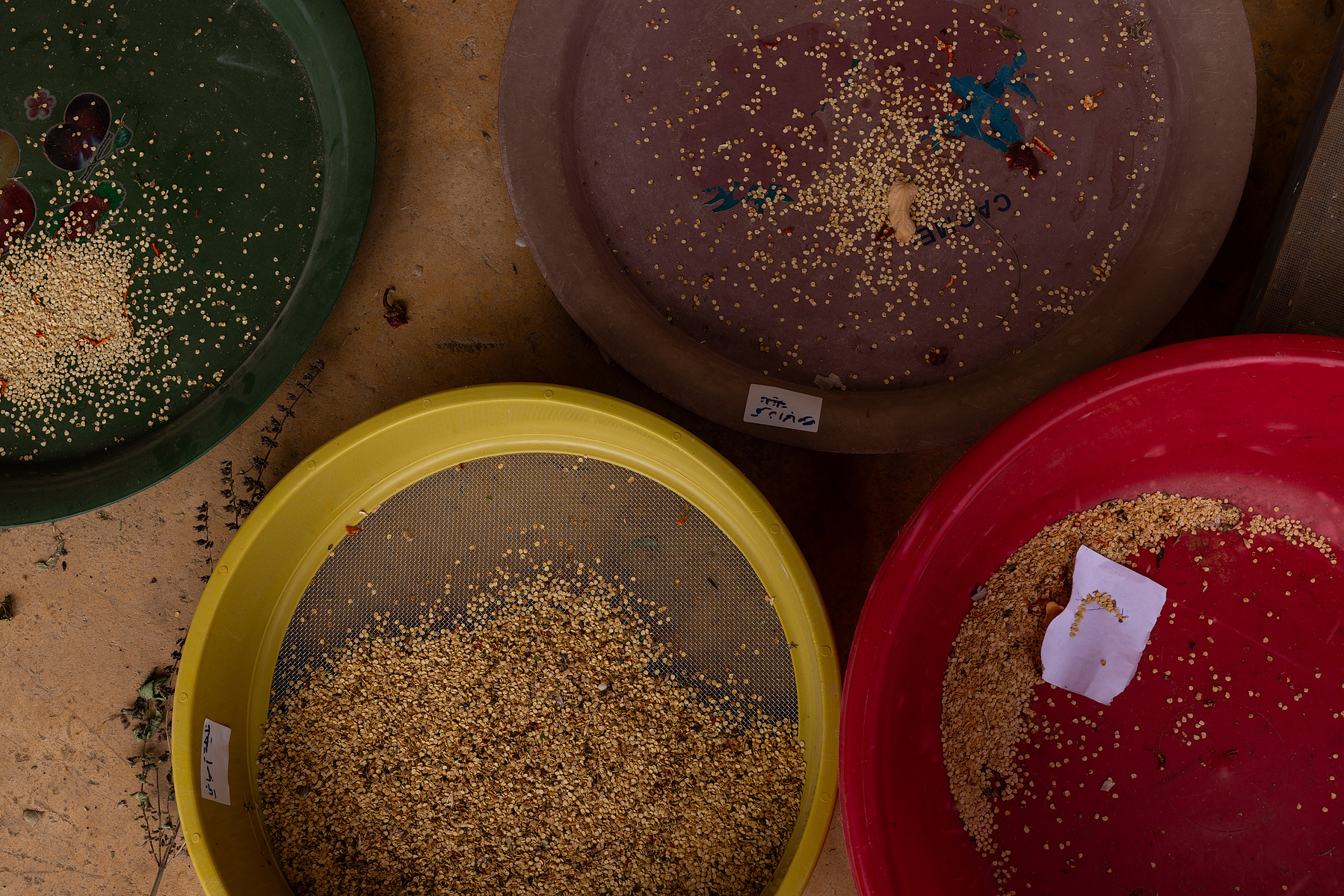
Seeds from different heirloom vegetables that have been separated and are ready for drying.
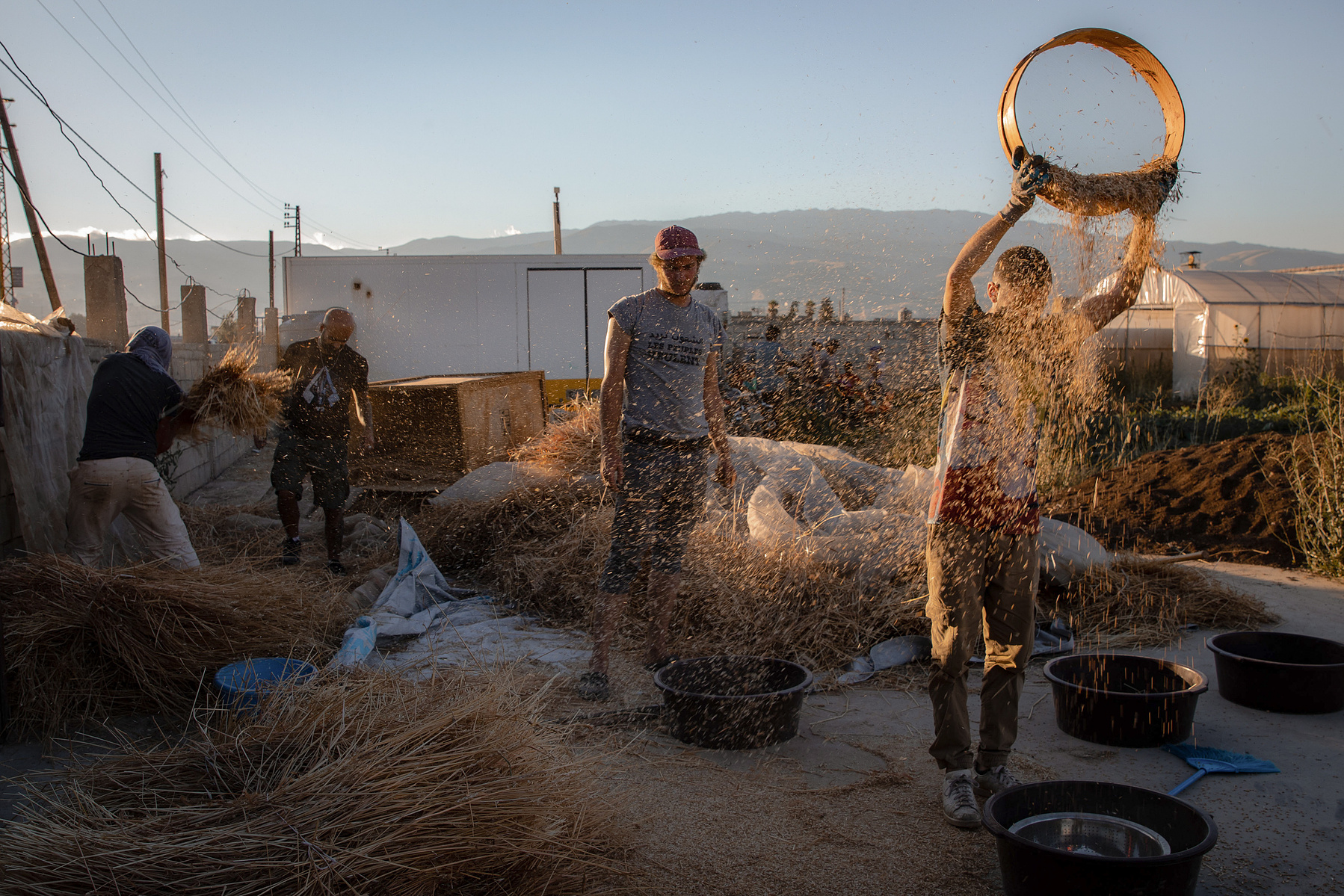
Farmers in the Beqaa, trained by Buzuruna Juzuruna, use manual methods (no expensive gasoline or machinery needed) to winnow a heirloom wheat harvest. Winnowing uses wind to separate the husk of wheat from the seed.
After being processed, a portion of the hulled wheat is set aside to sow the land for next season's harvest, while another portion is sent to a nearby mill to be turned into flour.
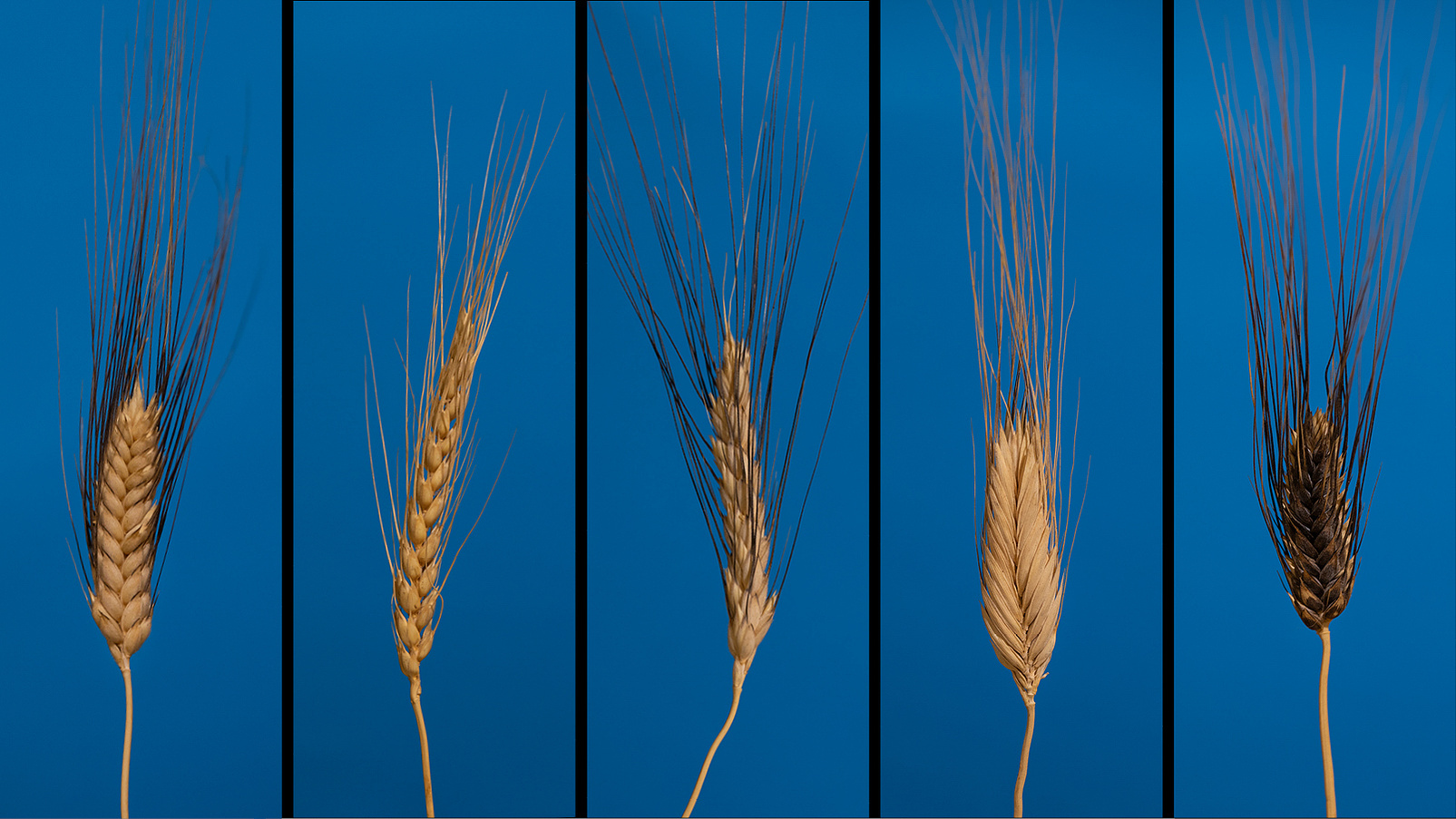
A collage of different heads of heirloom wheat varieties found in Lebanon, Palestine, and Iraq, all of which are grown and preserved by Buzuruna Juzuruna.